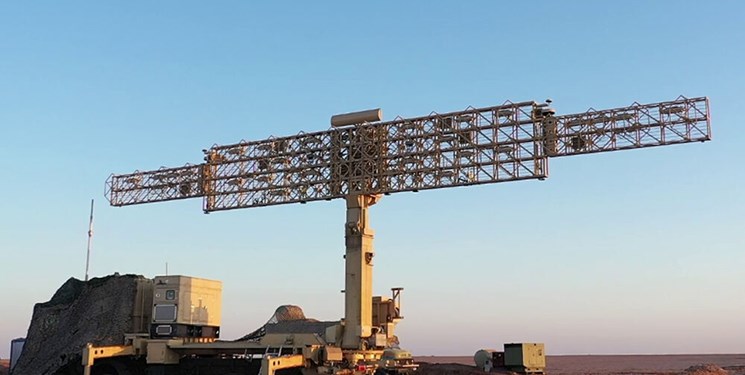IRGC Operates Its Domestically-Built Qods Radar for 1st Time in Drills
Domestically-Built Qods Radar was put into operation for the first time by the Islamic Revolution Guards Corps (IRGC) Aerospace Force in the operational phase of the joint large-scale drills, codenamed Modafe’an-e Aseman-e Velayat 1400 (Defenders of Velayat Skies 1400) in Iran's Central Desert region.

Qods Radar is able to monitor targets at a 500km range and altitude of over 90,000 feet. Tactical and single-vehicle capability, domestic software, the ability to deal with electronic warfare in various techniques, friend-enemy detection system and the ability to link with defense systems are among the characteristics of Qods radar system.
Iranian Army and the IRGC started large-scale aerial drills aimed at enhancing preparedness for defending the country’s skies against threats.
The operational phase of the joint large-scale drill, codenamed Modafe’an-e Aseman-e Velayat 1400 (Defenders of Velayat Skies 1400), began on Tuesday morning in the central desert areas of Iran.
The units of the Iranian Army’s Air Defense Force, the IRGC Aerospace Force and the Army’s Air Force are taking part in the exercises.
The drill is aimed at boosting the combat preparedness, strengthening deterrent power, evaluating the homegrown air defense systems in countering various threats, full defense against electronic warfare and cyberattacks, improving knowledge and skill of the units and boosting coordination among the Army and the IRGC’s command and control centers.
The participating units are employing combined, indigenous and creative tactics and techniques which would be implemented in proportion to threats.
The use of modern technology is among leading features of this maneuver.
In a relevant development in June, Commander of Khatam al-Anbia Air Defense Base Brigadier General Qader Rahimzadeh said that the country’s air defenses work as an integrated network, which provides full protection for Iran’s entire airspace, guaranteeing complete security for all authorized aircraft.
“We have managed to create safe, secure, and calm skies for the aircraft that are allowed to cross the country’s airspace,” the commander added at the time.
Earlier in October, the Iranian Army displayed a new homegrown tactical radar system capable of highly accurate detection of targets, and a long-range simulator used to intercept and track ballistic missiles and a wide range of projectiles and flying objects.
In recent years, Iran has made major breakthroughs in its defense sector and attained self-sufficiency in producing important military equipment and systems.







